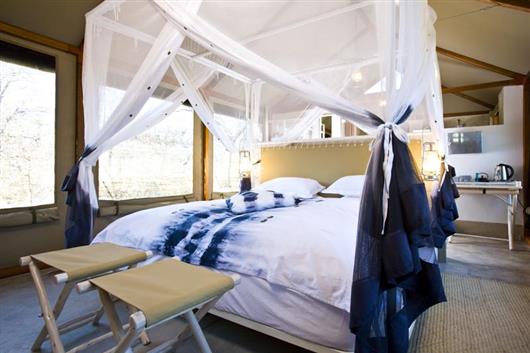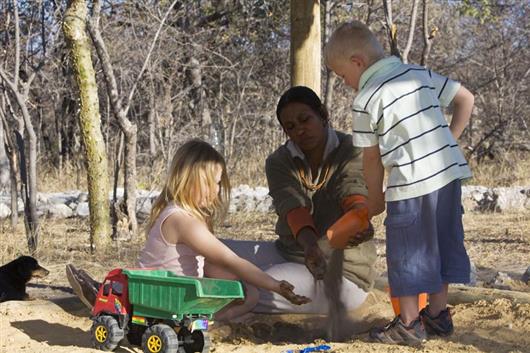



Mushara Bush Camp is situated 10 kms from the Von Lindequist gate of Etosha National Park. The Bush Camp accommodates 32 guests and 8 children in custom-made tent like structures. Mushara Bush Camp offers a down-to-earth tented bush camp experience which is well suited as an affordable base for independent travellers and families exploring the Etosha Pan National Park. The main Bush Camp House is thatched and has a true bush camp feel to it. The early evenings see a camp fire lit where guests can exchange stories of the day's wildlife sightings. Dinner, lunch and breakfast are served on the thatched verandah with the bush being a mere step away. Mushara Bush Camp is an ideal family destination.
Each of the 16 en suite tents is built from a combination of canvas, wood and local limestone. With their own private verandah and floor to roof windows, these tents are spacious and airy. The large bathroom has an oversized window and shower looking into the surrounding bush. Four of these tents are ideally suited for families with small children as they have a sleeper couch sleeping two children each. A coffee station, safe deposit box, mosquito net, hair drier and floor fan are standard.
Children are especially welcomed at Mushara Bush Camp. In the main house there is a special area designated for children with books, games, toys, drawing utensils, creative play and very friendly child minders to keep the children entertained. Outside there is a play park with a jungle gym, old tractor and a sand pit. There is also a children's pool.
Meal times and meals can be arranged around the needs of your children.
Activities on offer include game drives where guests experience a fascinating perspective of wildlife in Etosha. The lodge's vehicles have an all-weather safety design for the wet and dry season and offer a 360 degree unobstructed view.
Plains game such as zebra, kudu, oryx, wildebeest, giraffe, springbok, impala and eland abound in great numbers on the grasslands, while large herds of elephants are common. Lions dominate the predator food chain and make good use of the waterholes as hunting grounds, while smaller predators like the black-backed jackal trot around oblivious to humans. The demand for fresh drinking water means that there is little hierarchy at the waterholes and the diversity of species drinking at the same time can be staggering.